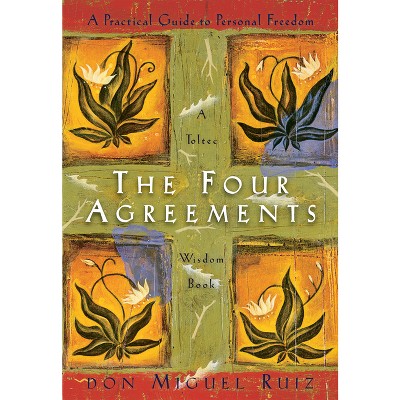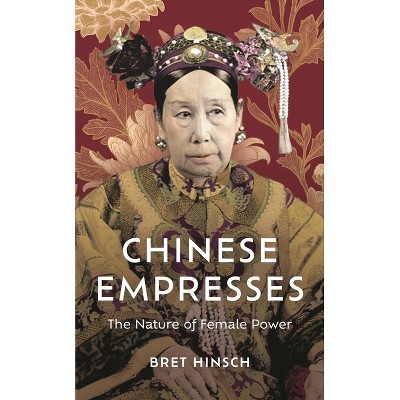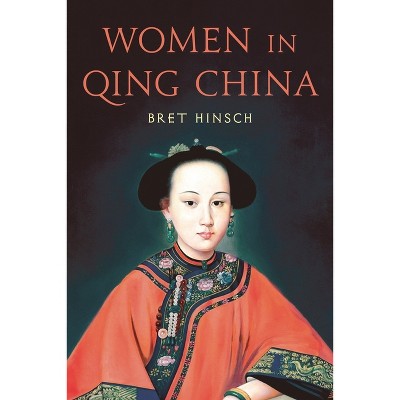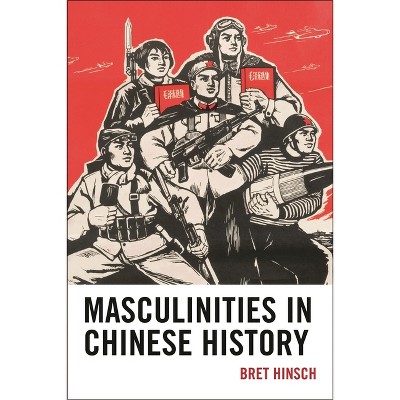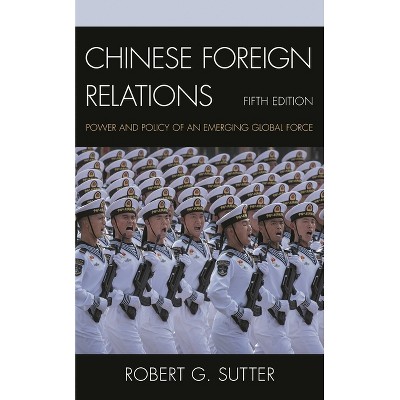Qing Dynasty and Traditional Chinese Culture - by Richard J Smith (Paperback)

$58.00 when purchased online
Target Online store #3991
About this item
Highlights
- This engaging and insightful history of the Qing dynasty (1636-1912) offers a systematic discussion of topics such as language, philosophy, religion, art, literature, and social customs.
- About the Author: Richard J. Smith is George and Nancy Rupp Professor of Humanities, Professor of History, and James A. Baker III Institute for Public Policy Scholar at Rice University.
- 560 Pages
- History, Asia
Description
About the Book
This engaging and insightful history of the Qing dynasty (1636-1912) offers a systematic discussion of topics such as language, philosophy, religion, art, literature, and social customs. Nuanced and wide-ranging, noted historian Richard J. Smith's authoritative book provides a...Book Synopsis
This engaging and insightful history of the Qing dynasty (1636-1912) offers a systematic discussion of topics such as language, philosophy, religion, art, literature, and social customs. Nuanced and wide-ranging, noted historian Richard J. Smith's authoritative book provides an essential introduction to late imperial Chinese culture and society.Review Quotes
A must-read for students, as well as scholars, who desire a convenient guide to Late Imperial China. One of its greatest strengths is certainly the way the author ably provides a multilayered representation, carrying the reader from the New Qing debates to traditional histories based on events, from political institutions to social and economic behaviors, patterns of beliefs and structure of language, artistic realization and their diffusion . . . . If one single word could summarize the appreciation felt for such an accomplished work, it would be Imperial. It is Imperial because it is a majestic piece of art. It is Imperial because the main topic is the core values of Qing dynasty's imperial system. But more importantly, it is Imperial because of the author's mastery of the fundamental political attitude of all Chinese emperors: divide et impera.
At once magisterial and engaging. . . . [In this] rich synthesis . . . Smith has provided us with a stimulating portrait of a complex civilization over a three hundred-year period. The Qing Dynasty and Traditional Chinese Culture is well worth reading now and will merit reconsulting in the future, as China's progress on the global stage continues, and as our students face a world increasingly subject to the realization of Chinese interests and Chinese influences.
Both students and research scholars will enjoy and learn much by reading this important volume. It is an outstanding achievement which explains, edifies, and encourages readers to view the complexities of Chinese civilization during the last dynastic era in confrontation with the forces of a globalizing world. Smith has produced a volume that displays great depth as well as a lucid prose style.
In this comprehensive history of Qing China (1636-1912), Smith offers an insightful interpretation of the empire's successes, the Manchu rulers' multiculturalism, and the dominant Han Chinese culture's enduring vigor. Organized both chronologically and thematically, the survey starts with an engaging overview of the political trajectory of China from the 14th century to the dawn of the 20th century, followed by an in-depth discussion of the Qing Empire's essential institutions. A renowned expert on Chinese cosmology and thought, historian Smith provides lucid discussions in the remaining pages on the major facets of the dynasty's cultural landscape, as well as the mechanisms that sustained its dynamics. The systematic attention that the survey gives to the mental world of the Qing Chinese supplements the dominant emphasis on political and socioeconomic history in other authoritative overviews of the dynasty. . . . Smith's work is up-to-date, providing synopses of recent debates and new findings in the field. An indispensable resource for teachers and students of late imperial and modern China, as well as for those who labor in the vineyards of world history courses. Summing Up: Essential. All levels/libraries.
Present[s] a survey of traditional Chinese culture during the Qing dynasty in a clear, smoothly flowing narrative that makes even arcane material accessible to a nonspecialist. Smith incorporates new insights on gender, sexuality, science, technology, and law while preserving the details of case studies and local exceptionalism in ways that advance his stated desire to introduce readers to the vast diversity of Qing society and culture. There are deft references to contemporary political and academic concerns that help to provide a context for the interpretive stances taken in Chinese historical writing. The book is well-supplied with maps, photographs of personages and places, and illustrations from woodblock-printed texts that enhance the written word. Smith makes liberal use of translated passages from important philosophical and literary texts to give readers an idea of just how Chinese writers communicated their thoughts and sentiments. Chinese characters interspersed throughout the text remind readers that English translations can only approximate (and often distort) the meanings of the original. . . . Smith must be commended for having produced a textbook that will significantly contribute to pedagogy about China.
The Qing Dynasty and Traditional Chinese Culture goes far beyond the boundaries of, and expectations for, a conventional textbook. It is an introduction to the history and culture of the Qing period that assumes no background, but the breadth of the subjects covered and the sophistication of their interpretation render this a valuable resource for scholars and teachers as well as for their students.Smith's erudition and experience derived from a lifetime of teaching and scholarship are abundantly displayed in the book.... Both the author and the publisher are to be commended for incorporating so many materials that will be of use to both beginning students and their teachers and to other researchers.
This book, all in all, has three impressive strengths that will benefit readers who are interested in the evolution of the Qing dynasty. First, it is very readable and the cited primary sources are abundant. Second, Smith cites a great deal of up-to-date English-language research on Qing history, with which readers can acquire considerable knowledge of the Qing dynasty. (In my opinion, this is the greatest contribution of Smith's book.) Third, the comprehensive discussions of pecific topics make this book suitable for graduate students who are interested in onducting research on the Qing dynasty. For these reasons, I strongly recommend his book to readers who are interested in researching the Qing dynasty.
This is a splendid survey that takes account of the latest findings of the new Qing history while bearing in mind that Qing society was fundamentally Chinese. It is readable, informative, and very up-to-date.
This monograph provides a comprehensive understanding of Qing dynasty culture based on up to-date research findings. . . .The greatest merits of this monograph are its encyclopaedic content and balanced perspective. . . .[A]lmost all the key terms in the Chinese language that are essential to Qing dynasty culture can be found in its content, where appropriate translation and definition are always provided. Therefore, this monograph is extremely useful for general readers, who may wish to have a broad view on the field of Qing history, and for scholars, who perhaps specialize in one or several particular areas of Qing culture and are eager for an in-depth understanding of others.
Throughout his distinguished career, Richard Smith has done pioneering work on both the political history of the Qing empire and the cultural world of its ordinary people. In this authoritative, up-to-date, careful, and--one must say--brave work, Professor Smith effectively relates those two endeavors. He succeeds wonderfully in introducing the reader to common elements of Qing culture, while avoiding essentialization and remaining mindful of China's great diversity over time, space, class, and other socio-cultural divides.
About the Author
Richard J. Smith is George and Nancy Rupp Professor of Humanities, Professor of History, and James A. Baker III Institute for Public Policy Scholar at Rice University.Dimensions (Overall): 8.9 Inches (H) x 6.0 Inches (W) x 1.5 Inches (D)
Weight: 2.15 Pounds
Suggested Age: 22 Years and Up
Number of Pages: 560
Genre: History
Sub-Genre: Asia
Publisher: Rowman & Littlefield Publishers
Theme: China
Format: Paperback
Author: Richard J Smith
Language: English
Street Date: October 23, 2015
TCIN: 1004175892
UPC: 9781442221932
Item Number (DPCI): 247-28-8659
Origin: Made in the USA or Imported
If the item details above aren’t accurate or complete, we want to know about it.
Shipping details
Estimated ship dimensions: 1.5 inches length x 6 inches width x 8.9 inches height
Estimated ship weight: 2.15 pounds
We regret that this item cannot be shipped to PO Boxes.
This item cannot be shipped to the following locations: American Samoa (see also separate entry under AS), Guam (see also separate entry under GU), Northern Mariana Islands, Puerto Rico (see also separate entry under PR), United States Minor Outlying Islands, Virgin Islands, U.S., APO/FPO
Return details
This item can be returned to any Target store or Target.com.
This item must be returned within 90 days of the date it was purchased in store, shipped, delivered by a Shipt shopper, or made ready for pickup.
See the return policy for complete information.
Trending Non-Fiction


$14.20
MSRP $27.00
Buy 1, get 1 50% off select books, games & more
4.8 out of 5 stars with 554 ratings

$22.40
Buy 1, get 1 50% off select books, games & more
5 out of 5 stars with 3 ratings

$22.40
MSRP $32.00
Buy 1, get 1 50% off select books, games & more
4.3 out of 5 stars with 6 ratings

$20.18
was $24.50 New lower price
Buy 1, get 1 50% off select books, games & more
5 out of 5 stars with 10 ratings
